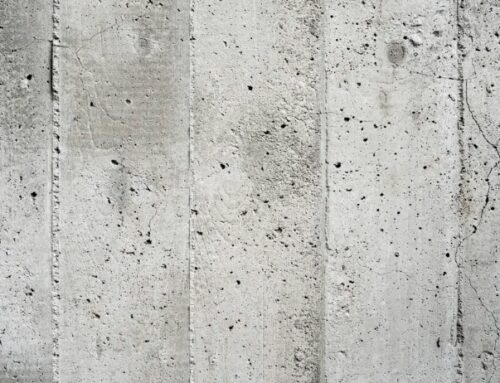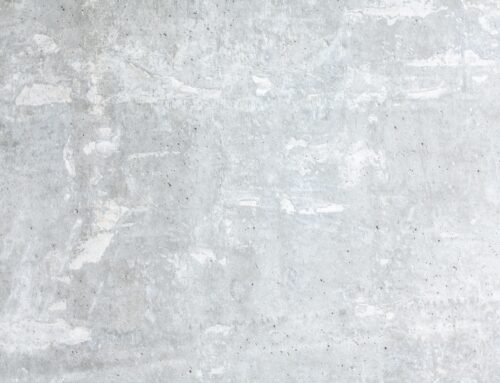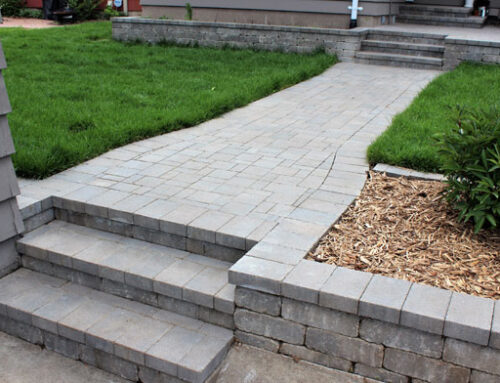Does your home or business need a little bit of curb appeal? Are you wanting to add some character and definition to your landscaping? If so, concrete landscape curbing may be the perfect solution! Not only is it an attractive addition, but it can also serve a functional purpose.
There are many different types of concrete landscape curbing available, each with its own unique benefits. Read on to learn more about Virginia’s most popular types of concrete landscape curbing.
What is Concrete Landscape Curbing?
First things first, let’s define concrete landscape curbing. Concrete landscape curbing is a type of edging that is used to define and separate different areas of your landscaping. It can be used to create pathways, line flower beds, or even act as a border around your property.
Concrete landscape curbing is made from, you guessed it, concrete! The concrete is mixed with colorants and other ingredients to create the desired look. Once it is poured into place, it will harden and set, creating a solid border that will last for years to come.
Types of Concrete Landscape Curbing
Now that you know what concrete landscape curbing is, let’s take a look at the different types that are available.
- Color Concrete Curbing
As the name suggests, color concrete curbing is made with colorants that are added to the concrete mix. This allows you to choose the exact color and shade of your landscape curbing. Whether you want a natural look or something that pops, there is a color for you!
- Stamped Concrete Curbing
Stamped concrete curbing takes color concrete curbing one step further by adding texture and pattern. This is achieved by pressing stamps into the wet concrete before it sets. The stamps create an imprint that gives the appearance of stone, brick or another type of material.
- Glow-in-the-Dark Concrete Curbing
Glow-in-the-dark concrete curbing is a fun and unique way to add safety and security to your property. The concrete is mixed with photo-luminescent pigments that absorb light during the day and release it at night. This allows you to see the outline of your landscaping in the dark, making it easier to avoid trip hazards.
- Reflective Concrete Curbing
Reflective concrete curbing is made with glass beads or other reflective materials that are added to the concrete mix. This type of curbing is often used in commercial settings, such as parking lots to increase visibility and safety.
- Heated Concrete Curbing
Heated concrete curbing is a great way to keep your landscaping free of snow and ice in the winter. The concrete is mixed with electrical heating elements that are embedded into the curbing. When turned on, the heat will melt snow and ice, preventing it from accumulating on your property.
- DIY Concrete Curbing
Not interested in hiring a professional to install your concrete landscape curbing? No problem! There are many types of DIY kits available that allow you to do it yourself. These kits come with everything you need to get the job done, including the concrete mix and colorants.
- Precast Concrete Curbing
Precast concrete curbing is made by pouring the concrete mix into molds at a factory. Once the concrete sets, the mold is removed, leaving behind a ready-to-install landscape curbing. This type of curbing is often used in commercial settings as it is a quick and easy way to install a large amount of curbing.
- Extruded Concrete Curbing
Extruded concrete curbing is made by pressing the concrete mix through an extruder. This machine creates a long, continuous strip of landscape curbing. It is then cut to the desired length and installed on-site.
- Segmented Concrete Curbing
Segmented concrete curbing is made by pouring the concrete mix into short sections or segments. The segments are then joined together to create the desired length of landscape curbing. This type of curbing is often used in DIY kits as it is easy to transport and install.
- Integral Color Concrete Curbing
Integral color concrete curbing is made with colorants that are added to the concrete mix before it is poured. This allows the color of the curbing to be uniform throughout. Often used in commercial settings, this type of curbing is available in a wide range of colors.
How Do I Know if Concrete Landscape Curbing is Right for Me?
Not sure if concrete landscape curbing is right for you? Here are a few things to consider:
- Cost: The cost of concrete landscape curbing can vary depending on the type of curbing, the size and scope of your project, and whether you hire a professional to install it. DIY kits are often the most affordable option, while precast concrete curbing is typically the most expensive.
- Maintenance: Concrete landscape curbing is very low maintenance. Unlike other types of landscaping, such as gardens and lawns, it doesn’t require regular watering or fertilizing. In fact, all you really need to do is sweep it occasionally to keep it clean!
- Durability: Concrete landscape curbing is very durable and can last for many years. It is resistant to damage from weather, insects, and animals, making it a great choice for both residential and commercial properties.
- Aesthetics: Concrete landscape curbing is available in a wide variety of colors, styles, and textures. Whether you want something classic or modern, there’s sure to be an option that suits your taste.
Still not sure if concrete landscape curbing is right for you? Contact a professional landscaping company in your area for more information. They will be able to help you determine if concrete curbing is the best option for your property and budget.





